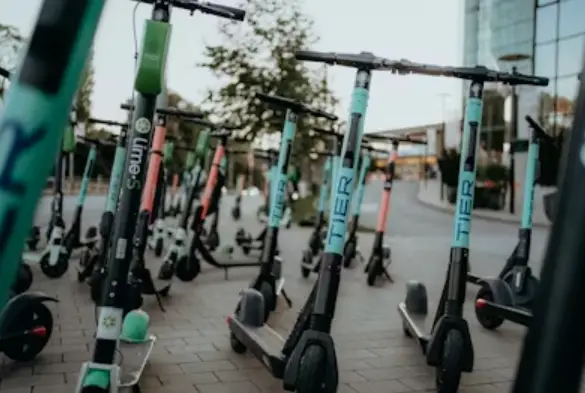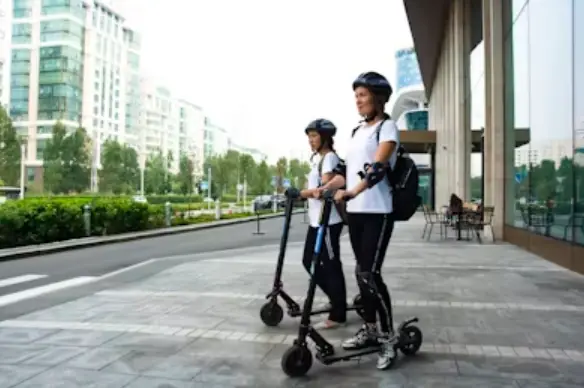How To Troubleshoot Common Issues With Electric Scooter

Electric scooters have revolutionized personal transportation by providing an environmentally friendly and fun alternative to driving or public transit. However, like any other vehicle, they occasionally encounter issues that need troubleshooting.
In this article, we will walk through some of the most common problems electric scooters encounter and how to resolve them. With some simple checks and repairs, you can get your scooters up and running smoothly again.
1. Check Battery Level
One of the first things to check if your scooter isn’t powering on or isn’t traveling as far as usual is the battery level. Most scooters from brands like Electric Kicks have a battery gauge or indicator lights showing approximately how much charge remains. If the battery is low, recharge it thoroughly before moving on to other troubleshooting steps. You can typically fully charge most electric scooter batteries within 6-8 hours when plugged into a wall outlet using the charger that came with the vehicle.
Low battery problems are often temporary fixes, so check the gauge after charging to see if that resolves the issue. Over time, battery life will decrease with use and charging cycles, so the range may gradually diminish as the battery ages. This is expected battery performance degradation. You may need to replace the battery pack if the range declines sharply from when it was new.
2. Inspect Connections
After ensuring the battery is fully charged, check all the electrical connections for possible defects. Start with the battery connections, where the battery is plugged into the scooter control unit or power distribution module.
Inspect the heavy connector to ensure it is properly seated, filled, not gapped, and corroded; there should also be no foreign material in the contacts. Also, inspect throttle and brake control wires for secure attachment without damage; intermittent or loose wiring may be causing power or control glitches.
Ensure there is no play in the connections and the charging port of the scooter is wiped clean. The charging cable, on the other hand, must seat firmly without play when plugged into the charging port. Corrosion built up, in case exposed to the outdoor charger port elements, may inhibit charging or power transfer.

3. Test Throttle and Brake
After confirming that there is power from the battery and tight connections, it is now checking the control function. With a scooter on but not moving, open the throttle gradually and listen to the electric motor powering up gradually without strange noises. It should be smooth and gradually increment if throttled.
Next, while pressing gently on the brake trigger, it should activate the rear caliper or drum brake gently, bringing the scooter to a complete halt. Test the full range of throttle and brake operation now with the scooter rolling at a walking pace on flat ground.
The throttle acceleration should be even and progressive, while the braking becomes progressively harder as you squeeze the lever more. Any glitches, lag, or lack of power or braking could indicate issues with the relevant control module, cabling, or motor that require further diagnosis.
4. Examine Wheels and Bearings
Mechanical parts like the wheels and bearings will still need your regular maintenance of an electric scooter.
Check for wear on the tires’ treads, and if it gets bald, change the tires to avoid flats. Also, it must be checked that the wheels run properly, and the bearings have to be smooth without free play or too much resistance in rotation. The problems that arise around noise or vibration are generally the ones that might provoke vehicle failure if not dealt with.
Periodic lubrication will be required as the bearings’ seals and grease eventually dry out with use over time. Bearings in your scooter model may have to be repacked with marine-grade grease from an axle or hub disassembly using a grease gun. If worn, the axle, strut, and suspension bushings may have to be replaced.

5. Reset or Calibrate Controls
Sometimes, electronic glitches or signal interference can result in faulty throttle or brake response that doesn’t correlate to physical lever/trigger movement. This may seem strange but could explain unwanted acceleration, braking, or erratic control behavior. In these cases, resetting or recalibrating control modules may resolve the issue by clearing temporary faults.
Most scooters have a procedure to factory reset the controller module, which involves holding buttons or switches in a specific pattern during power-on. Check your owner’s manual for instructions. Calibration takes this further by matching the throttle’s closed, idle, and fully open positions to onboard sensors for accurate metering. The manufacturer usually outlines the process and often fixes odd control quirks.
6. Update Firmware or Software
As with smartphones and computers, electric vehicle components contain software that can occasionally require updates. Manufacturers periodically release firmware upgrades to troubleshoot emerging issues, patch security vulnerabilities, or add new features. Outdated software could lead to glitches, especially as hardware and operating systems evolve.
Checking the manufacturer’s website is advised to see if any new recommended firmware versions are available for download. The update procedure varies by scooter model but usually involves downloading files to a microSD card or USB drive, then inserting it into a specific port for an automatic update process.
Having the latest firmware ensures your scooter runs with all the available fixes and performance improvements.

Final Thoughts
With some basic systematic checks of common culprits, you can diagnose and solve most electric scooter problems without visiting a mechanic. Start with the battery, then inspect all electrical connections before testing controls and examining mechanical parts.
Simple resets, calibration, or firmware updates may also fix software-related glitches. Armed with this troubleshooting process, you’ll be back cruising to enjoy the benefits of reliable electric transportation.
